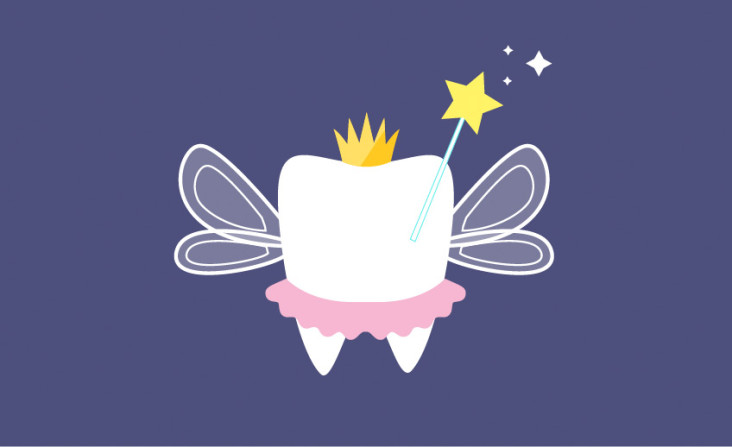It’s a long-standing tradition that most of us have grown up with – when a child loses a baby tooth, they place it under their pillow. Then, while they’re sleeping, a magical fairy takes the tooth and leaves money in its place.
But where did this tradition come from? There are several theories about how the Tooth Fairy originated.
It is believed that the Vikings paid a “tooth fee” to kids when they lost their teeth, and then kept those teeth on a necklace. In Medieval Europe, children’s teeth were commonly buried, supposedly so that a new one would be free to grow in its place, and also to prevent the evil witches from finding the tooth and cursing the child. These are only a couple of the many possible origin stories – different cultures had specific traditions and beliefs when it came to a child’s lost tooth.
Our current tale of the Tooth Fairy is much more recent than most people realize. While it may have roots in old stories from faraway countries, the North American version added the fairy to our tradition. This was rumoured to be in part because Disney was releasing movies that featured helpful fairy creatures at the time, and so the Tooth Fairy was born.
When a child is young, the Tooth Fairy is fun and exciting. Receiving money from a magical fairy, simply because a baby tooth came out – what could be better? But as they get older, there comes the inevitable time that they start questioning whether the beloved fairy truly exists. So what is the proper way to deal with the situation and tell them the truth?
Experts say it’s best to wait until your child asks about the tooth fairy. When they become curious, explain that while it is not a real fairy that visits them, it is a fun story that makes losing a tooth even more exciting. Share the varied incarnations of the tooth fairy in different countries throughout history, to show that there are many traditions and that children all over the world have their own special version.
There is no “right” age to explain the story to children. When they’ve grown out of the make-believe stage and start asking about Santa, the Easter Bunny, and our favourite fairy, they’re likely ready to know the truth. But don’t be afraid to prolong the magic – the Tooth Fairy offers a great way to nurture imagination (not to mention dental health!).

